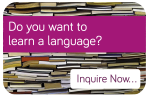The Professional English in Use series of books is aimed at upper intermediate to advanced learners primarily for self-study, but it can also be used in private classes. For students who are working, or are planning to work, it is essential to be able to understand more specific English which may only be used in one industry, for example ICT (information and communication technology). There are 40 chapters which cover a large range of IT vocabulary, an answer key and an index of vocabulary.
The introduction explains that a lot of material has been taken from the Cambridge International Corpus; the authors explain that this textbook covers the language of computing, but also includes topics such as mobile phones, as such it isn’t a book specifically designed for IT specialists, and it could be referred to by anyone learning English who wants to improve their vocabulary in using IT. In comparison to some other vocabulary textbooks that focus on certain areas, this book is particularly accessible. To help students use the book it has been divided into sections including living with computers, e-commerce, and typical language functions. The authors further explain that each chapter has a left page with definitions of computer terms, a paragraph explaining an ICT concept or a computer device, as well as diagrams, words in a situational context and authentic or adapted texts. The right page consists of exercises such as puzzles, word building activities and true/false exercises. There are also follow-up activities and even cartoons which give a sense of humour to the learning process. The authors finally explain that a student can even study the book from start to finish, or just study the units which are of interest.

Before the first chapter there is a tips and techniques section advising the learner to try and guess the meaning of a word from its context. There is a suggestion for organizing personal notes and for using a dictionary, this is followed by exercises related to these suggestions. This leads into the first chapter of living with computers, the advantages and disadvantages are discussed and what computers can be used for. The exercises consist of picture identification, text comprehension and filling in blank spaces, it is a very gentle introduction to computing which is helped by the fact that so many concepts and words will be familiar to most students as well as an amusing cartoon demonstrating how both people and computers can think the other is stupid. The second chapter looks at parts of a computer, again this is very easy for a learner to understand as some parts are internationally recognized like CD/DVD drive, and others are simple to remember as the mouse, screen, etc, can be identified by nearly everyone. The next two sections go into further detail about other PC parts and a simple explanation of how a PC works. The exercises support this vocabulary learning with quotations, matching words with definitions and also diagrams and a text with fill the blank questions.
The third chapter goes into different types of computers such as a PC and a laptop, unfortunately the book needs to be updated from its 2007 edition as it includes inaccurate descriptions of tablets, redundant technology such as a wearable computer belt and really needs to have a smartphone explanation. Unfortunately, the exercises following this chapter similarly suffer from being out of date, especially when we keep in mind the fact that current PCs and laptops increasingly have touchscreen technology and PDAs aren’t used as much. As such this chapter and some of the other chapters, while still useful, also include things which the student will have to ignore as being irrelevant. Subsequent chapters cover a whole range of useful topics including printers and monitors, before going into further detail about more complex ICT concepts and vocabulary like disks and drives.
"It is perfect to use as either self-study or in a class, for self-study it might be best to tackle the units according to what is most interesting and relevant, for example mobile phones and email. In a class it can be used from beginning to end as an introduction to technology, or it could be used as part of a general class as a way of teaching certain IT topics."
The authors have managed to cover an impressive number of areas including health and safety, word documents and spreadsheets and even online banking and robots. At first glance most students might be put off the title which suggests a textbook full of hard to understand vocabulary about topics that only someone with a degree in computer science could understand, however in reality it is a book which absolutely anyone could pick up and use to improve their English knowledge of the technology they use every day. There is even a comprehensive explanation of grammar at the end of the book and an index of all the words that can be found in the textbook and their page number. It is perfect to use as either self-study or in a class, for self-study it might be best to tackle the units according to what is most interesting and relevant, for example mobile phones and email. In a class it can be used from beginning to end as an introduction to technology, or it could be used as part of a general class as a way of teaching certain IT topics.
This book really lends itself to anyone and any kind of class, at least one chapter will have some relevance to someone. However, a new edition is required to update a number of small out of date items, although in truth any book related to IT would require frequent updates as the pace of change in technology is constantly moving forward.


